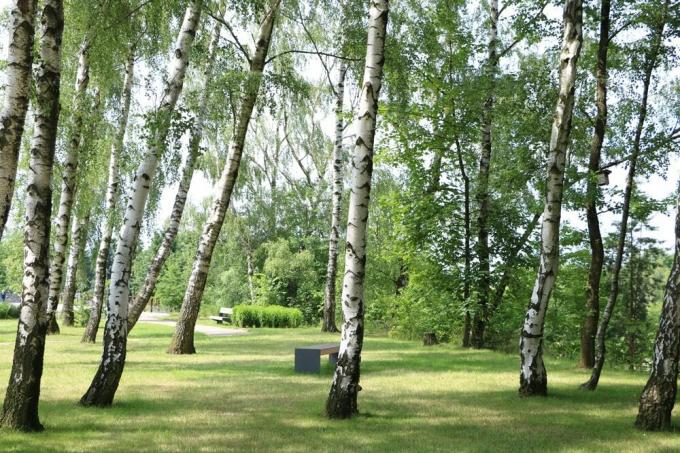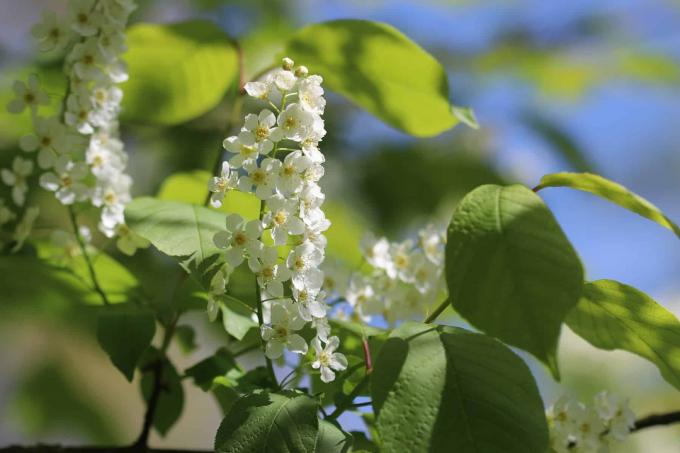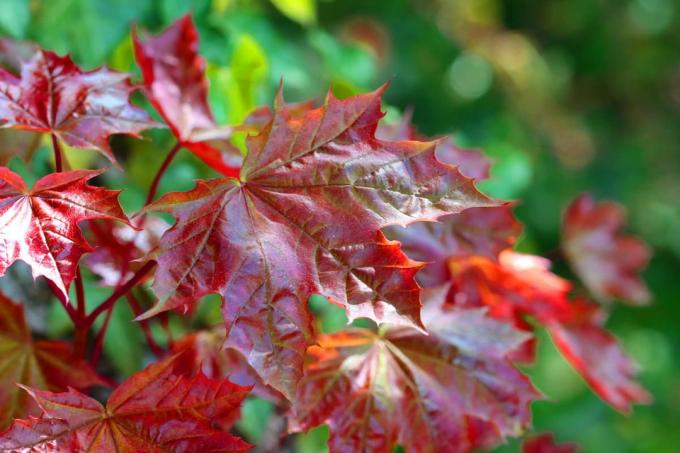

Table of contents
- Light
- substrate
- Protection
- Place
- support
If you want to plant birch trees, you don't have to put in a lot of effort in terms of care. This is especially true if a suitable location has been chosen for the trees. What is important?
Light
Although birch trees also thrive in partial shade or shade, they prefer locations in full sun. It therefore makes sense not to plant a birch in the shade of a house wall or wall or even on the north side. South and west as well as places without shadows from buildings or larger plants are ideal.
substrate
The birches are not picky about the substrate either. Sandy, loamy, bog or humus, moist or dry - the main thing is that there are enough nutrients. Ideally, the pH is between five and eight. Well-drained, fresh soil is also conducive to healthy tree growth. Adding well-rotted compost directly when planting, but also as an occasional fertilizer, also helps to provide the birch with comprehensive care and keep it resilient.

Protection
Birch trees often grow in places that are unsuitable for other trees. This can be due to the dryness or the moisture of the soil, to too much or too little light. The adaptable plant is therefore often found in nature in groups that consist solely of birch trees.
Because the birch has a hard time asserting itself against competing trees. However, birch trees do not require any special protection in winter. Most varieties not only withstand light frost well, but also survive temperatures of up to -45 degrees Celsius.
Place
Birch trees don't get very old at up to 120 years. With a maximum height of 30 meters, however, they can be comparatively expansive. Therefore, they are by no means suitable for every garden. However, height alone is not the only potential problem. Birch trees are flat-rooted. This means that the trees below the ground do not grow very deep, but the root network spreads out over a wide area. Therefore, a birch should not be planted near walls, walls and paths. In addition, a distance of several meters to other larger plants should be planned when choosing the location.

Failure to do so could result in damage to paving slabs and walls as the roots can create cracks. On the other hand, if trees or other large plants are too close, water and nutrients can accumulate in such large Quantities are pulled from the ground, which increases the growth and resistance of the plants are restricted.
support
As robust and easy to care for as birch trees are, support should be provided for young trees. This is particularly useful in exposed areas with sometimes strong winds, to enable straight growth and to prevent both falling over and buckling. A normal pole is perfectly sufficient for this purpose.
A notice:
Due to their great resilience and easy-care character, birch trees can be planted all year round as long as there is no frost. Nevertheless, early autumn is an optimal time for planting, as the trees can then grow slightly before winter. Spring is also a good time to plant.
 Home editorial office
Home editorial office
Learn more about Baumlexikon

Bird cherry, Prunus padus: caring for, pruning & propagating
The bird cherry is a shrub or tree that is the ideal bee pasture in a natural garden. However, the plant should also be viewed with caution, as it is a poisonous plant for horses. Nevertheless, it is popular in the local colorful hedges.

Red maple: 9 tips for caring for, cutting & overwintering
The red maple is one of the most impressive trees in Germany due to its unusual scarlet leaf colour. Here you can find out how to integrate this impressive plant into your garden and how to keep it healthy and vigorous.

Sycamore tree: Properly care for and cut sycamore trees
The plane tree (Platanus) has a high decorative value. In terms of care, it is mostly undemanding, which is why it is often chosen as a street tree. Nevertheless, there are a few details to be observed when it comes to care, as described in the home garden guide.

Cutting dwarf pine - instructions for the perfect cut
Dwarf pines can be pruned by thinning out, topiary or limbing. A bonsai design with needle and root pruning is also possible. So that the wood does not look unattractive after the pruning measure, a few rules of technology should be observed.

Is the vinegar tree poisonous? | Who is it dangerous for?
In ornamental gardens, the vinegar tree is an attractive eye-catcher due to its unusual flowers and the appealing autumn color of its feathered leaves. The red, upright fruit cobs (flowers) are responsible for the striking appearance. Despite everything, the vinegar tree is not an unproblematic tree.

Vinegar, Rhus typhina | Care from A – Z
The vinegar tree is an easy-care plant for the garden and tub with a special autumn color. Only its uncontrolled spread can lead to problems in the garden. However, this can be curbed with a root barrier.


